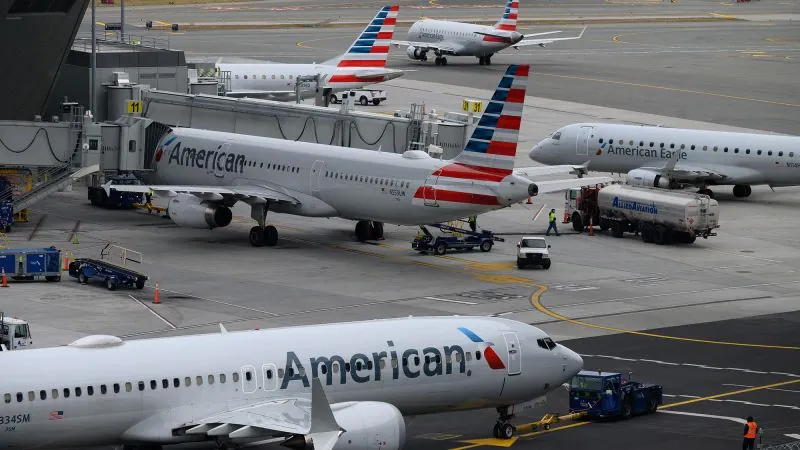
Close Call Over Hawaii: Heroic Air Traffic Controller Saves American Airlines Flight from Mountain Collision!
2024-11-15
Author: Jessica Wong
Introduction
In a dramatic turn of events, an American Airlines flight narrowly avoided disaster shortly after departing from Honolulu International Airport, thanks to quick-thinking air traffic control. The Federal Aviation Administration (FAA) has confirmed that instructions from an air traffic controller played a crucial role in preventing Flight 298 from crashing into the mountains surrounding the airport.
The Incident
The flight, which was en route to Los Angeles, took off early Wednesday morning. Open-source flight tracking data reveals that the aircraft initially headed east toward the Koʻolau mountain range, a route that could have led to catastrophic consequences.
Swift Action by Air Traffic Control
The tension heightened when the controller noticed that the flight crew did not follow the designated turn after takeoff. Responding swiftly, the air traffic controller ordered the pilots of American Flight 298 to 'expedite your climb ... through terrain' and instructed them to turn right to avoid the rising mountains.
Crew Compliance and Safety Measures
Fortunately, the crew acted decisively. They confirmed that they had received clearance for a right turn and complied promptly with the controller's orders. American Airlines stated that during this climb, there were no alerts from the Enhanced Ground Proximity Warning System (EGPWS), indicating that the aircraft was not in imminent danger of colliding with the terrain based on its current trajectory.
Achieving a Safe Altitude
However, as the flight continued its ascent, tracking data shows it had ascended to a safe altitude of at least 1,500 feet above the mountain peaks by the time it reached the surrounding terrain, ensuring a safe passage.
Significance of the Incident
This incident underscores the vital role of air traffic control in maintaining flight safety and the importance of adherence to assigned flight paths. While there were no immediate injuries reported, the FAA is now conducting an investigation to assess the circumstances that led to the incident.
Expert Commentary and Future Protocols
Flight safety experts emphasize the need for thorough training and clear communication protocols to prevent similar occurrences in the future.
Conclusion
As the aviation community reflects on this near-miss, it serves as a reminder of the high stakes involved in air travel and the unsung heroes who work tirelessly to keep flights safe in the skies. Now, questions arise: what could have happened if air traffic control hadn't stepped in? Will changes to flight protocols be made following this incident? Stay tuned for more updates on this unfolding story!


 Brasil (PT)
Brasil (PT)
 Canada (EN)
Canada (EN)
 Chile (ES)
Chile (ES)
 España (ES)
España (ES)
 France (FR)
France (FR)
 Hong Kong (EN)
Hong Kong (EN)
 Italia (IT)
Italia (IT)
 日本 (JA)
日本 (JA)
 Magyarország (HU)
Magyarország (HU)
 Norge (NO)
Norge (NO)
 Polska (PL)
Polska (PL)
 Schweiz (DE)
Schweiz (DE)
 Singapore (EN)
Singapore (EN)
 Sverige (SV)
Sverige (SV)
 Suomi (FI)
Suomi (FI)
 Türkiye (TR)
Türkiye (TR)